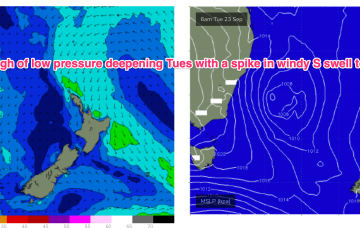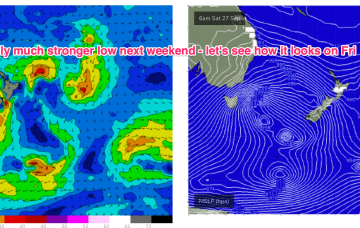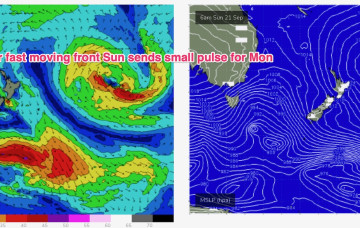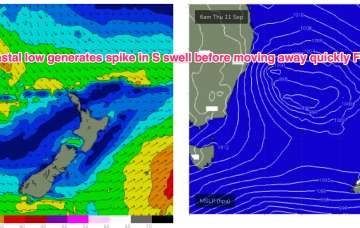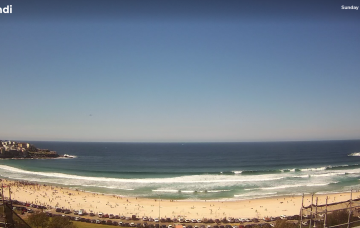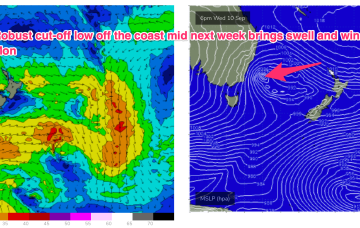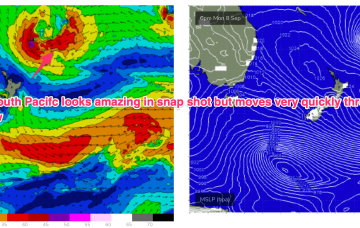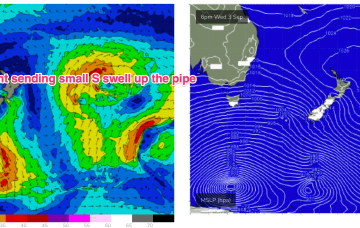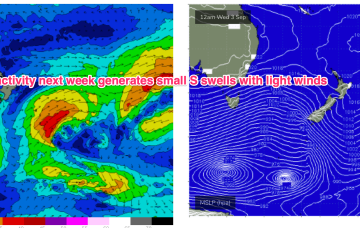S’ly winds freshen along the NSW coastline, building from Southern NSW and extending northwards as a trough of low pressure develops, and deepens through the day into a broad surface low.
Primary tabs
Rapid movement of fronts re-occurs over the weekend with a stronger S swell signal now expected into next week.
Swell generating winds are poorly aligned and with the weakening system racing through the swell window we’re only expecting a small payload of S swell from this progression.
Nothing major on the radar next week so we’ll be relying on small S pulses for a wave at S magnets.
Coastal low brings a rapid spike in big, windy surf easing rapidly to fun, clean surf on the weekend
We should then see a low centred just off Sydney rapidly deepen o/night into tomorrow morning with W’ly gales north of the low and SW-S gales south of the low. The low moves away quickly tomorrow with SW-S gales tending to strong winds from the same direction through the day.
The main feature on this week's synoptic charts is a cut-off low that’s expected to intensify off Southern NSW around Thursday, delivering a rapid increase in short range southerly swell and associated SW tending S’ly winds.
Quite a strong front and deep low passes through the southern extremity of the Tasman Sea swell window Mon/Tues- with S swell likely to build Wed or Thurs.
Small S swells continue to be the main swell trains.
An ice shelf fetch over the weekend looked strong on paper but the extent to which winter sea ice has hindered swell generation remains a key source of uncertainty.
Still on track for a wintry blast this weekend as a strong cold front tied to an intense low currently west of Tasmania sweeps up over the SE overnight and enters the Tasman early tomorrow morning.


